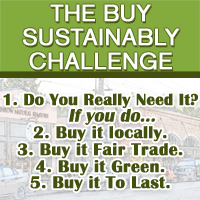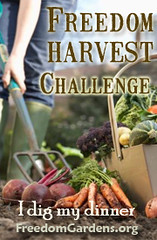I’m home from the hospital and taking it easy this weekend. I don’t have results yet (will wait till early next week to hear from my doc) but I came through it ok. I think the next few days will be spent relaxing around the house and getting ready for Monday’s orientation meeting at the Capital District Community Gardens.

Louise's Leaves
We picked up this locally-produced book at the co-op called “Louise’s Leaves.” It’s a cook’s journal that talks about which local foods will be ready and when (it was written for the Buffalo/Vermont area – so perfect for us). Even though we won’t be getting the fruits of our gardening for many moons yet, I took a gander to see what we local foods we could possibly be eating if we had a year long garden. Although the book “year” technically begins in May, I skimmed forward to the following April (the last chapter) to see what we could expect. Apparently the “big” items are kale and parsnips…doesn’t sound too yummy. But I am impressed that anything could be expected to grow in this tundra in early April. She recommends making a nice Kale slaw or stir-frying parsnips with some kale leaf and seasoning it with some chive and coriander. I’m already looking for some heirloom chive seeds to grow – I love onions and garlic a little TOO much.
We’ve been told that the most popular garden spot in Schenectady is still available, so I’m keeping my fingers crossed for it! Our local community gardens have been tended for over 30 years, and currently there are 48 different locations through the Capital District Area. Most of the gardens do seem to be towards the… not as nice neighborhoods, but it’s a wonderful thing to bring gardening, fresh fruits and vegetables, and organic values to people who might not otherwise get to experience them.
The Capital District Community Gardens are organic – both in fertilizing and and growing methods. This is exciting because hubby and I don’t have to worry that our garden will be “contaminated” by commercial pesticides in the next garden plot over. The CDCG actually will give us free gardening classes and free seeds, but I’m enjoying looking at all the different seeds out there. We’re not sure exactly how big our plot will be yet, so I don’t want to make too many decisions before we know.
According to the seed planting schedule though, we can start planting the following plants in the next two weeks:
- beets
- broccoli
- brussel sprouts
- cabbage
- chinese cabbage (this and cabbage could have been planted this week, but we don’t have our plot yet)
- onions
- peas
- potatoes
- radish
- spinach
I LUFF SPINACH!! It is my favorite veggie in the whole wide world. And it’s sooo expensive at farmer’s markets. I really hope I can grow lots of it this summer!
Filed under: Gardening | Tagged: capital district community gardens, CDCG, co-op, Gardening, louise's leaves, organic garden, spinach, vegetable garden | Leave a comment »





